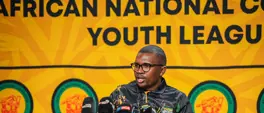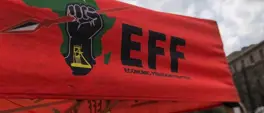MALAIKA MAHLATSI: Africa's history of governments of national unity - Part 1
Malaika Mahlatsi
11 June 2024 | 10:00With South Africa looking set to form a government of national unity after its elections, Malaika Mahlatsi explores the history of governments of national unity in Africa, why they were formed and how they've fared.
Over the past week, the local media and analysts have been leading the discussion on what the future of South Africa looks like under a coalition government of the African National Congress (ANC), the Democratic Alliance (DA) and the Inkatha Freedom Party (IFP).
The three parties are engaged in discussions about forming what has been termed a government of national unity (GNU). The term, which refers to a government formed by a coalition of parties including hard-line rivals, is not new in South Africa’s lexicon. It was first used to describe the government that emerged from the first democratic general elections in 1994. This government was constituted by the ANC, IFP and the National Party (NP) – the three biggest political parties at the time. The ANC, which had won the majority vote but fell slightly short of a two-thirds majority, led the GNU, with Nelson Mandela as president. The NP’s FW de Klerk, who was the last apartheid president in South Africa, deputised Mandela. The NP had obtained 20.39% of the vote, against the ANC's 62.65% (the IFP obtained 10.54% of the vote, translating to 43 seats in the National Assembly, against the ANC's 252 and the NP's 82). The cabinet was comprised of members of all three parties, as well as other political parties.
The government of national unity in South Africa in 1994 was born out of a political and social context defined by volatility. Prior to the 1994 elections, South Africa had undergone over four decades of apartheid – a system of legalised racial segregation in which Black, Coloured and Indian people were deprived of political, social, economic, cultural and environmental rights. This system has been classified as a crime against humanity and is punishable under the Rome Statute of the International Criminal Court (ICC). From the late 1980s to the early 1990s, the ANC and IFP were engaged in a brutal conflict that led to the deaths of thousands of Black people in townships and rural areas across the country, particularly in the provinces of KwaZulu-Natal and Gauteng. So severe was the conflict that some scholars have referred to it as a civil war. Thus, the government of national unity of 1994 was not only an instrument to ensure inclusivity during the transition period from apartheid to democracy, but also an attempt at bridging a huge divide between warring racial and political groups in a South Africa that was still very fragile.
Governments of national unity have also been established in other countries under similar circumstances to South Africa's 1994 government of national unity. This is especially the case with governments of national unity in Africa. In recent history, governments of national unity have been established in Zimbabwe, Kenya, Rwanda and Libya. In Zimbabwe, the government of national unity was established following the disputed and violent 2008 presidential election in which opposition leader, Morgan Tsvangirai, of the Movement for Democratic Change (MDC-T), won against ZANU-PF’s Robert Mugabe, forcing a presidential run-off where the state used its monopoly of violence against opposition leaders and supporters alike. The power-sharing agreement would result in Mugabe retaining the presidency while Tsvangirai was appointed prime minister. The position was abolished at the end of his term.
In the same period, between 2008 and 2013, Kenya was also governed by a government of national unity between Mwai Kibaki’s Party of National Unity (PNU) and Raila Odinga's Orange Democratic Movement (ODM). As with Zimbabwe, the Kenyan GNU was the result of post-election violence following electoral manipulation by the PNU and subsequent mass protests by Odinga’s supporters. The violence, which had assumed an ethnic posture, resulted in the deaths of over 1,000 people and the displacement of hundreds of thousands. Similar to Zimbabwe, the crisis was resolved by allowing Kibaki to retain the presidency while Odinga was made prime minister. The position was abolished at the end of his term.
In Rwanda, the government of national unity was formed following the 1994 genocide in which hundreds of thousands of Tutsi people were killed and over two million forced to flee the country. The government of national unity was thus an attempt to reconcile the Hutu and Tutsi ethnic groups that had been engaged in the civil war. Paul Kagame, a Tutsi who had led the Rwandan Patriotic Front (RPF) in the fight against the genocide, was appointed vice president, with Pasteur Bizimungu as president. The latter, despite having later joined the RPF, had ties to radical anti-Tutsi groups and had been part of the Hutu-dominant National Revolutionary Movement for Development (MRND) until the early 1990s. At the end of this government of national unity, the position of vice president was abolished.
In Libya, the 2021 government of national unity was also established to resolve conflict by unifying the rival Government of National Accord based in the nation’s capital, Tripoli, and the Second Al-Thani Cabinet, based in the strategic port city of Tobruk.
Governments of national unity have historically been established to promote unity and political stability following national emergencies including but not limited to violent conflict.
Other factors that can inform the establishment of a government of national unity include natural disasters. In Israel and Italy, for example, a government of national unity was established in 2020 in response to the COVID-19 pandemic. In Nepal, following the devastating earthquake in 2015, in which nearly 10,000 people died and more than twice that number were severely injured, a government of national unity was established to handle the crisis and draft a new constitution.
In other circumstances, governments of national unity are established not to resolve conflict, but to prevent it. An example of this is Sweden, where a government of national unity was established during World War II, with the primary goal of ensuring that Sweden does not join the war. This goal was successful, as Sweden remained neutral in the war and did not engage in combat.
The decision by President Cyril Ramaphosa to call for the establishment of a government of national unity following the 2024 general election in South Africa is thus unusual in that there’s no national emergency that necessitates such a formation.
A government of national unity also presents some serious problems for South Africa. For one thing, there is a lot of compromise that goes into governments of national unity – and this may be justified where there has been so much violence and conflict that failure to reach consensus threatens more lives. However, in the case of South Africa, the compromises that must be made for a government of national unity that involves the ANC and DA to work may be what lays the foundation for the conflict.
In the second part of this article, to be published next week, the dangers of an ANC-DA coalition or government of national unity are explored.
Malaika Mahlatsi is a geographer and researcher at the Institute for Pan African Thought and Conversation. She is a PhD candidate at the University of Bayreuth in Germany.
















